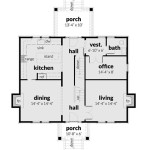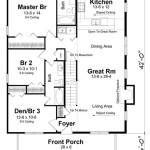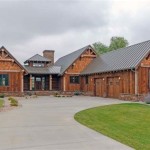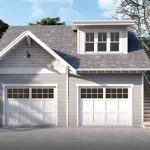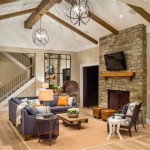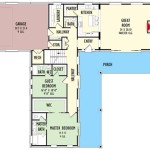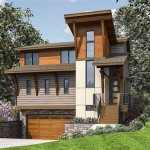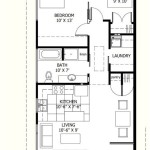Building Plans for Small Cabins: A Guide to Design and Construction
The allure of a small cabin, nestled amidst the tranquility of nature, is undeniable. Whether you envision a weekend getaway, a permanent residence, or a cozy retreat, building a small cabin presents an opportunity to create a space that reflects your unique personality and needs. However, embarking on such a project requires careful planning and attention to detail. Building plans are the foundation of any successful cabin construction, providing a blueprint for every aspect of the structure. This guide explores the importance of building plans for small cabins, key considerations for design, and essential elements to include in your plans.
The Importance of Building Plans
Building plans are more than just diagrams; they are a comprehensive guide that ensures a smooth and efficient construction process. They provide a detailed visual representation of your cabin, outlining the dimensions, materials, and construction techniques. This allows for precise estimations of materials, labor costs, and overall project budget. Building plans also serve as a communication tool between contractors, subcontractors, and suppliers, minimizing miscommunication and ensuring everyone works towards a shared vision.
Beyond practical benefits, building plans offer legal protection. Local building codes and regulations often require approved plans before construction can begin. Obtaining permits and ensuring compliance with building standards is crucial to avoid legal issues and potential delays in the project.
Key Considerations for Small Cabin Design
Designing a small cabin is an exercise in maximizing space and functionality. Here are some key considerations to guide your design choices:
1. Functionality and Layout
Think about the primary use of the cabin – will it be a weekend escape, a permanent residence, or a rental property? This will determine the necessary living spaces, like bedrooms, bathrooms, kitchen, and living areas. Efficiently arrange these spaces to maximize functionality while maintaining an open and welcoming feel. Utilize built-in furniture and shelves to conserve floor space. Consider multi-purpose areas that can serve as both a living space and a dining room or a guest room that doubles as an office.
2. Energy Efficiency and Sustainability
Small cabins offer an excellent opportunity to embrace sustainable design principles. Prioritize energy efficiency by incorporating features like proper insulation, high-performance windows, and energy-saving appliances. Consider incorporating renewable energy sources like solar panels or wind turbines. Utilize natural lighting to reduce electricity consumption. Choose sustainable building materials like reclaimed wood or bamboo to minimize environmental impact.
3. Aesthetics and Style
Your cabin's style should reflect your personal taste and the surrounding environment. Choose exterior finishes that complement the landscape, such as wood siding, stone accents, or metal roofing. Consider the overall aesthetic – do you prefer a rustic charm, a modern minimalist design, or a blend of both? Choose interior finishes that create a cozy and inviting ambiance. Incorporate natural elements like wood beams, stone fireplaces, and large windows to connect the cabin with the surrounding nature.
Essential Elements to Include in Building Plans
Your building plans should encompass all aspects of the cabin construction. They should include:
1. Site Plan:
This plan shows the location of the cabin on the property, outlining its orientation, setbacks, and any existing structures or utilities. It also includes details about landscaping, driveways, and walkways.
2. Floor Plans:
Floor plans provide a detailed view of each level of the cabin, showing the layout of rooms, walls, doors, windows, and fixtures. They include dimensions, material specifications, and any unique design features.
3. Elevations:
Elevations are exterior views of the cabin from different angles, showing the roofline, windows, doors, and siding. They provide a visual representation of the cabin's overall styling and appearance.
4. Cross-Sections:
Cross-sections are cutaway views that show the construction details of the cabin, including the foundation, framing, roof structure, and insulation. They provide a comprehensive understanding of the building's structural integrity.
5. Details:
Detail drawings provide a zoomed-in view of specific elements of the cabin, such as windows, doors, stairs, and built-in fixtures. They ensure consistency and accuracy in construction and help avoid any inconsistencies or misinterpretations.
Creating building plans for a small cabin is a rewarding process that allows you to translate your vision into a tangible reality. Careful planning, attention to detail, and a focus on functionality, energy efficiency, and aesthetics will ensure a successful project that creates a haven for years to come.

13 Best Small Cabin Plans With Cost To Build Tiny Simple

30 Free Diy Cabin Plans Ideas That You Can Actually Build Log Floor Small

Small Cabin Designs With Loft Floor Plans

13 Best Small Cabin Plans With Cost To Build Craft Mart

13 Best Small Cabin Plans With Cost To Build Tiny Rustic Loft

Small Log Homes Kits Southland

11 Free Small Cabin Plans With Printable Log Connection

Rustic Vacation Homes Simple Small Cabin Plans Houseplans Blog Com

Small Cabin House Plans Floor Construction Guest

Simple Small Cabin Plans

